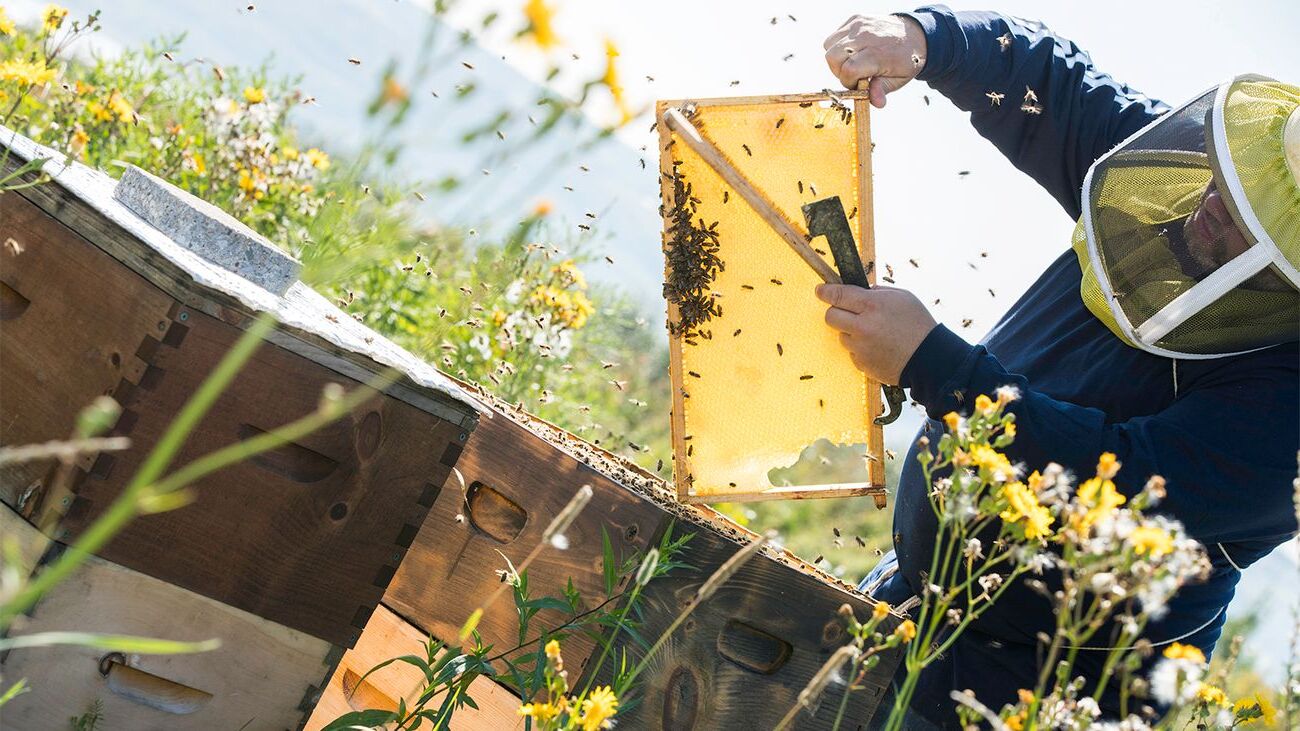
Beekeeping, also known as apiculture, is one of humanity's oldest professions, dating back at least 4,500 years. From ancient Egypt to modern urban settings, the practice of maintaining bee colonies has evolved significantly. Ancient civilizations like Greece and China recognized the importance of bees for honey production and pollination. Over time, tools like the smoker and hive tool were developed to manage colonies effectively. Bees play a crucial role in agriculture, pollinating about one-third of the food we consume. Despite facing threats like habitat loss and colony collapse disorder, beekeeping remains vital for our environment and food systems.
Key Takeaways:
- Beekeeping has a rich history dating back over 4,500 years, making it one of the oldest professions. Ancient civilizations like Egypt and Greece valued bees for their honey and pollination services.
- Bees play a crucial role in our world, from ancient times to modern days. They face challenges like colony collapse disorder, but their importance in agriculture and scientific studies continues to grow.
Ancient Beginnings of Beekeeping
Beekeeping, also known as apiculture, has a history that stretches back thousands of years. Early humans recognized the value of bees for their honey and pollination services, leading to the development of beekeeping practices.
- Ancient Origins: Evidence of beekeeping dates back at least 4,500 years, making it one of the oldest professions known to humans.
- Second Oldest Profession: Often referred to as the second oldest profession, beekeeping follows closely behind agriculture.
- Ancient Civilizations: Beekeeping was widespread in ancient civilizations such as Egypt, Greece, and China, where bees were valued for honey and pollination.
Beekeeping in Ancient Egypt
The Egyptians were pioneers in organized beekeeping, recognizing the importance of bees in their culture and economy.
- Egyptian Beekeeping: Ancient Egypt began practicing organized beekeeping around 2,500 BCE.
- Biblical References: Honey bees and honey are mentioned in the Bible, highlighting their significance in ancient times.
- Ancient Egyptian Beliefs: Egyptians believed bees were the tears of the sun god, Ra, showing their reverence for these insects.
Beekeeping in Ancient Greece
Greek mythology and culture also placed a high value on bees, integrating them into their stories and daily life.
- Greek Mythology: Bees feature prominently in Greek mythology, such as the tale of Zeus being fed honey by sacred bees.
- Greek Coinage: The ancient Greeks minted coins with bees on them, symbolizing their importance in Greek culture.
- Melissa’s Name Origin: The name ‘Melissa’ comes from the Greek word for honey bee, reflecting the significant role bees played in ancient Greek society.
Early Honey Harvesting and Mead Production
Humans have been harvesting honey and producing mead for thousands of years, as evidenced by ancient records and artifacts.
- Honey Harvesting: The first record of honey harvesting is a cave painting from 6,000-8,000 year-old caves in Spain.
- Mead Production: Fermented honey, known as mead, was first produced in ancient China around 7,000 BCE, making it the world’s oldest alcoholic beverage.
- Cave Paintings: Ancient cave paintings often depicted scenes of honey hunting and beekeeping, providing early visual records of the practice.
The Evolution of Modern Beekeeping
The modern era of beekeeping began with significant advancements in understanding bee behavior and developing tools to manage colonies effectively.
- Francois Huber Era: The modern era of beekeeping began with Francois Huber, who in the late 18th century examined the behavior of honey bees in a folding leaf hive.
- Development of Beekeeping Tools: Over time, beekeepers developed various tools and equipment such as the smoker, hive tool, bee brush, and extractor to manage their colonies effectively.
- Smoker’s Role: The smoker is a critical tool for beekeepers, producing smoke that masks the bees’ alarm pheromones, making them less aggressive and more manageable during inspections.
Seasonal Nature of Beekeeping
Beekeeping is a seasonal occupation, with tasks and responsibilities changing throughout the year.
- Seasonal Occupation: Beekeeping is a seasonal occupation, with tasks changing throughout the year. The busiest time is spring when bees are building up their colonies, and late summer when honey is harvested.
- Honey Harvesting Process: Harvesting honey involves removing honey-filled frames from the hive and extracting the honey without harming the bees. Beekeepers often leave enough honey in the hive for the bees to consume over winter.
- Winter Preparation: After harvesting, beekeepers prepare the hives for the colder months by ensuring the bees have enough food stores to last until spring. If necessary, they might feed the bees sugar syrup to supplement their diet.
Cultural Significance of Bees
Throughout history, bees have held significant cultural and symbolic importance in various societies.
- Biblical References: The Bible mentions honey bees and honey, indicating their importance in biblical times.
- Saint Valentine’s Role: Saint Valentine is the patron saint of beekeepers and also love, reflecting the deep connection between bees and human society.
- Ancient Rituals: In ancient New England, beekeepers would whisper to their beehives about major events in their lives, such as deaths or marriages. This ritual, known as “telling the bees,” was believed to keep the bees informed and content.
The Biology and Behavior of Bees
Understanding the biology and behavior of bees is crucial for effective beekeeping and appreciating their role in nature.
- Honey’s Nutritional Value: Honey is composed of 80% sugars and 20% water, making it a valuable food source for humans and bees alike.
- Queen Bee’s Role: The queen bee is the only bee that lays worker eggs and can live up to five years. She is busiest in the summer months, laying up to 2,500 eggs per day.
- Worker Bee’s Lifespan: The average worker bee lives for just five to six weeks. During this time, she produces around a twelfth of a teaspoon of honey.
- Drones’ Purpose: Male honey bees (drones) have no stinger and do no work. Their sole purpose is to mate with the new queen.
- Bee Communication: Bees use various methods to communicate, including the waggle dance, which informs other bees about the direction and distance of food sources.
Modern Challenges and Scientific Studies
Beekeeping today faces numerous challenges, but also benefits from scientific studies that help us understand and protect these vital pollinators.
- Colony Collapse Disorder: Over the past 15 years, colonies of bees have been disappearing, a phenomenon known as colony collapse disorder. The reason remains unknown, but it has led to significant concerns about bee health and pollination.
- Bee’s Role in Agriculture: Honey bees pollinate approximately one third of the food we consume, making them crucial for agriculture and food security.
- Bee’s Impact on Economy: Bees contribute significantly to the economy through pollination services, which are essential for many crops. The value of pollination services is estimated to be in the billions of dollars annually.
- Threats to Bees: Bees face numerous threats, including habitat loss, pesticide use, climate change, and diseases. These threats have led to a decline in bee populations worldwide.
- Scientific Studies: Bees are being used in scientific studies to understand dementia and other neurological conditions. When a bee takes on a new job, its brain stops aging, providing insights into cognitive functions.
Beekeeping in Modern Times
Today, beekeeping is practiced in various environments, from rural to urban settings, with modern techniques and equipment enhancing the practice.
- Beekeeping in Modern Times: Today, beekeeping is practiced in various environments, from rural to urban settings. Modern beekeepers use advanced techniques and equipment to manage their colonies effectively.
- Urban Beekeeping: Urban beekeeping has become increasingly popular, with many cities allowing beekeepers to maintain hives within city limits. This practice helps to increase local pollination and honey production.
- Bee’s Navigation Skills: Bees use the sun as a compass and polarized light to navigate on cloudy days, demonstrating their remarkable navigation skills.
- Winter Preparation: After harvesting, beekeepers prepare the hives for the colder months by ensuring the bees have enough food stores to last until spring. If necessary, they might feed the bees sugar syrup to supplement their diet.
The Legacy of Beekeeping
Beekeeping's history stretches back thousands of years, showcasing its deep roots in human civilization. From ancient Egypt to modern urban settings, the practice has evolved, yet its core remains the same: fostering a symbiotic relationship between humans and bees. These industrious insects not only provide us with honey but also play a crucial role in pollinating our crops, ensuring food security. Despite facing numerous threats like habitat loss and colony collapse disorder, bees continue to be indispensable to our ecosystem. The advancements in beekeeping tools and techniques reflect our ongoing commitment to understanding and protecting these vital pollinators. As we look to the future, it's clear that the legacy of beekeeping will continue to be a testament to human ingenuity and our enduring connection to nature. Let's cherish and support this ancient practice for generations to come.
Frequently Asked Questions
Was this page helpful?
Our commitment to delivering trustworthy and engaging content is at the heart of what we do. Each fact on our site is contributed by real users like you, bringing a wealth of diverse insights and information. To ensure the highest standards of accuracy and reliability, our dedicated editors meticulously review each submission. This process guarantees that the facts we share are not only fascinating but also credible. Trust in our commitment to quality and authenticity as you explore and learn with us.


